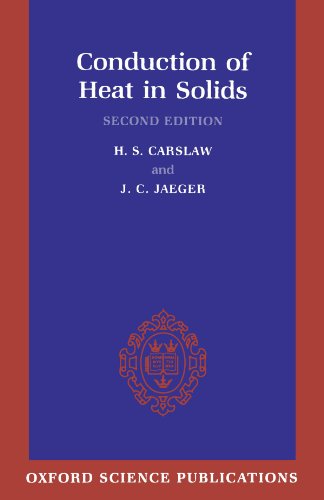Conduction of Heat in Solids book
Par reddick jeffery le vendredi, mai 27 2016, 00:46 - Lien permanent
Conduction of Heat in Solids by H. S. Carslaw, J. C. Jaeger


Conduction of Heat in Solids H. S. Carslaw, J. C. Jaeger ebook
Publisher: Oxford University Press, USA
Format: djvu
ISBN: 0198533683, 9780198533689
Page: 517
Heat obtained by heat conduction, depends on properties of the material through which heat transfer. (c) Metals are good conductors of heat whereas wood is a poor conductor of heat (i.e. Conduction Firefighter Conduction. Thermal conduction exists in solids, liquids and gasses. Thermographers must have a solid understanding of how heat is transferred. Here are quick definitions, how they apply to your attic, and how to fix them: 1. Conduction is heat transfer within solids or between contacting solids. Conduction is the one of three types of heat transfer in which thermal energy transfers from one point to another through the interaction between the atoms or molecules of the matter. For example, if one end of a metal rod is heated up, the heat will gradually travel to the other end until the entire rod becomes hot. Strictly speaking, in fluids the transfer of energy through Brownian motion is called diffusion. Actually 'conduction' is heat transfer in solids, such as metals. The governing equation for heat transfer by conduction is: Conduction Equation. Conduction is essentially heat transfer through solids. We don't necessarily need to take a college level course, but a practical understanding and being well-grounded in physics is essential. An insulator).Discuss this statement with reference to the mechanism of thermal energy transfer in solids. Simply put, when the heat is committed in one area next to the solid by molecular collisions.
Sapira's Art and Science of Bedside Diagnosis pdf free